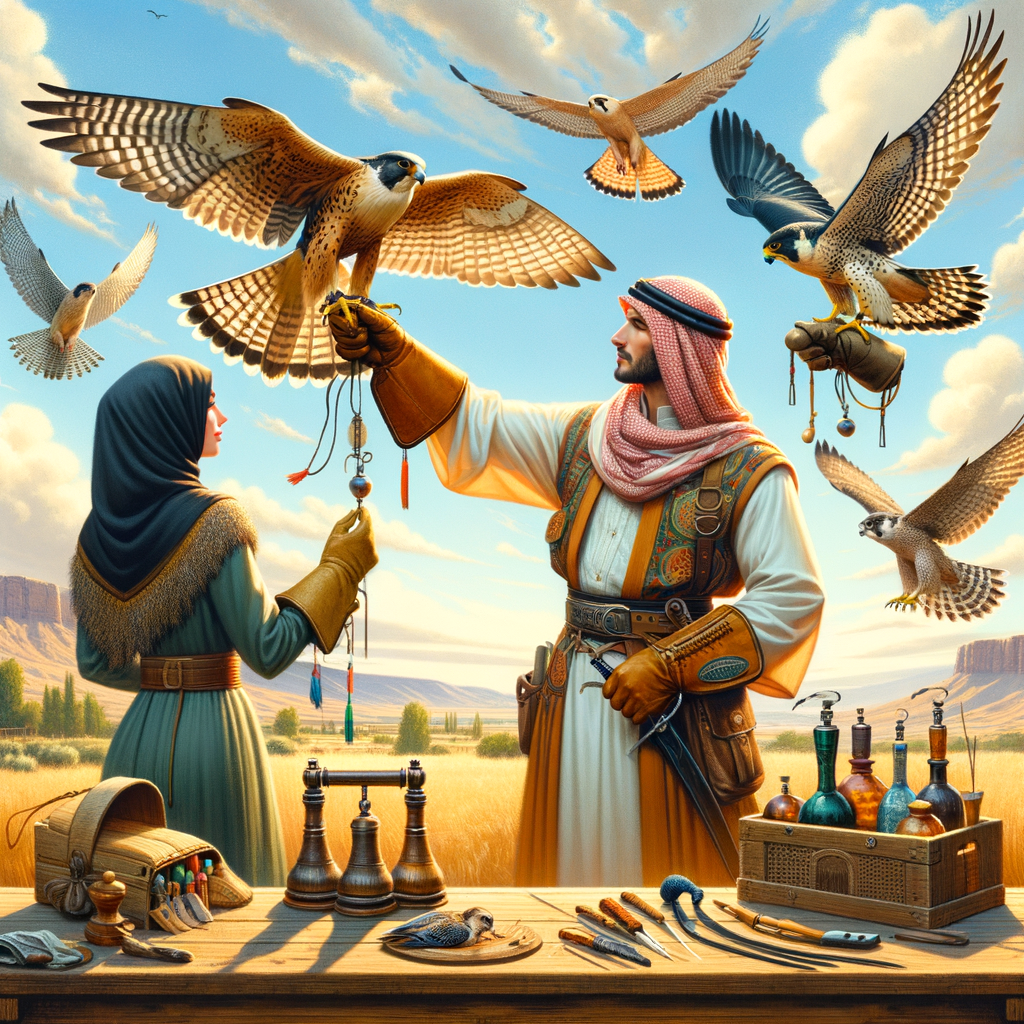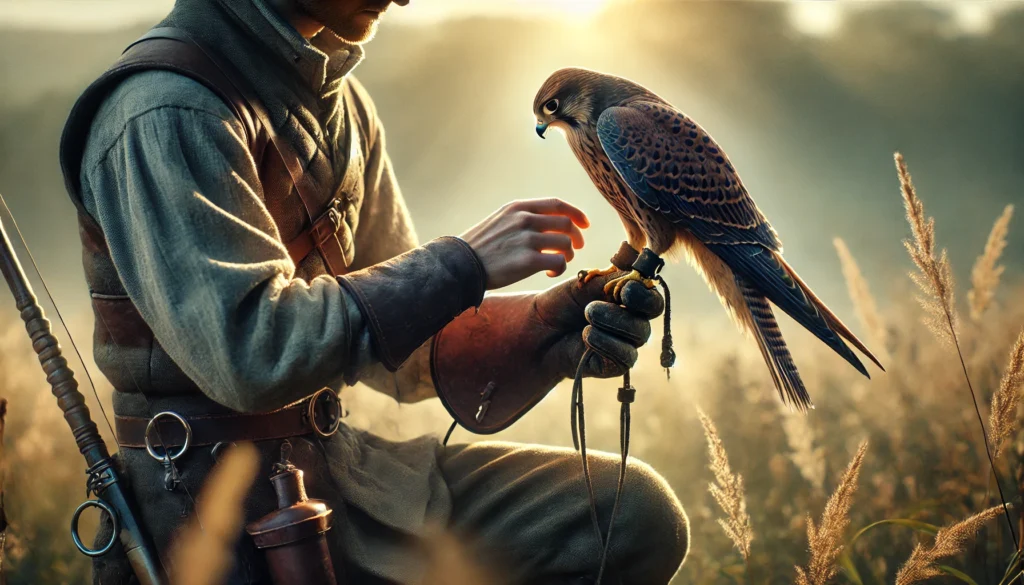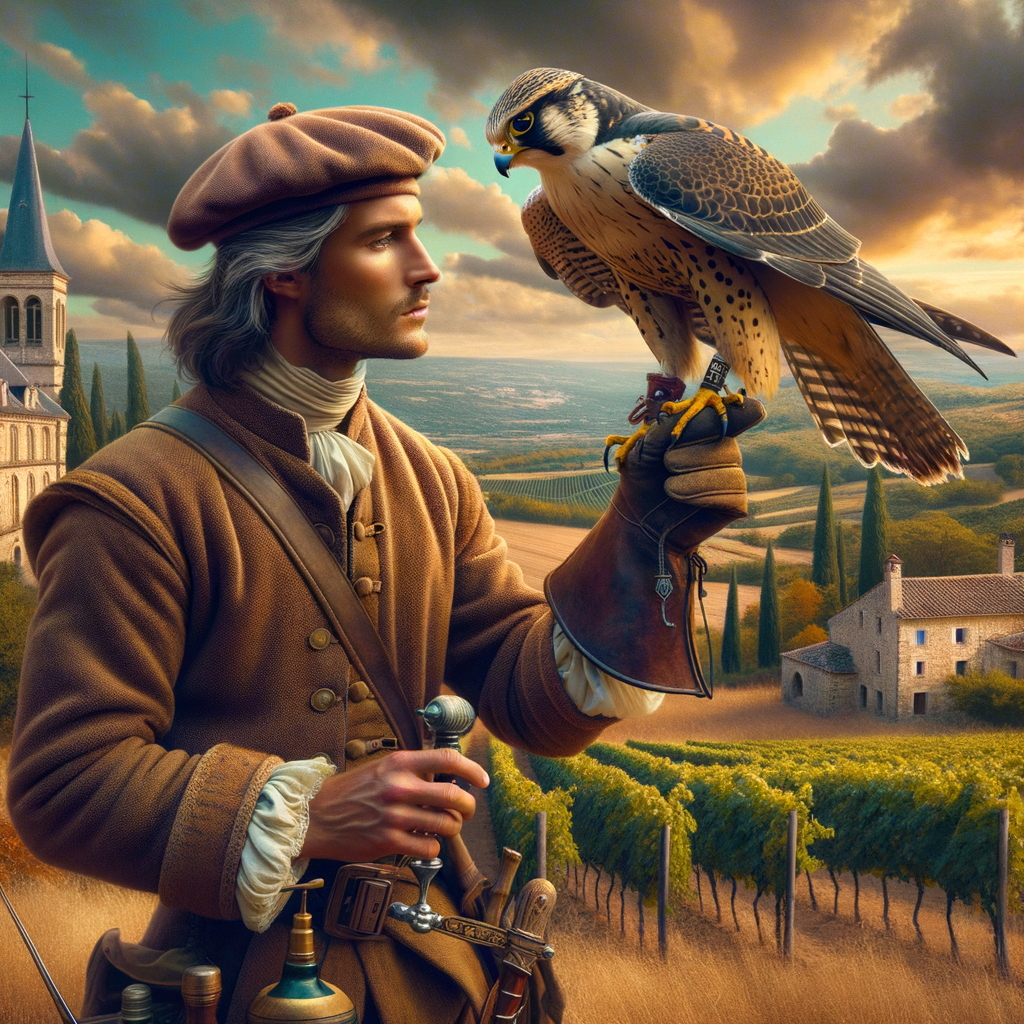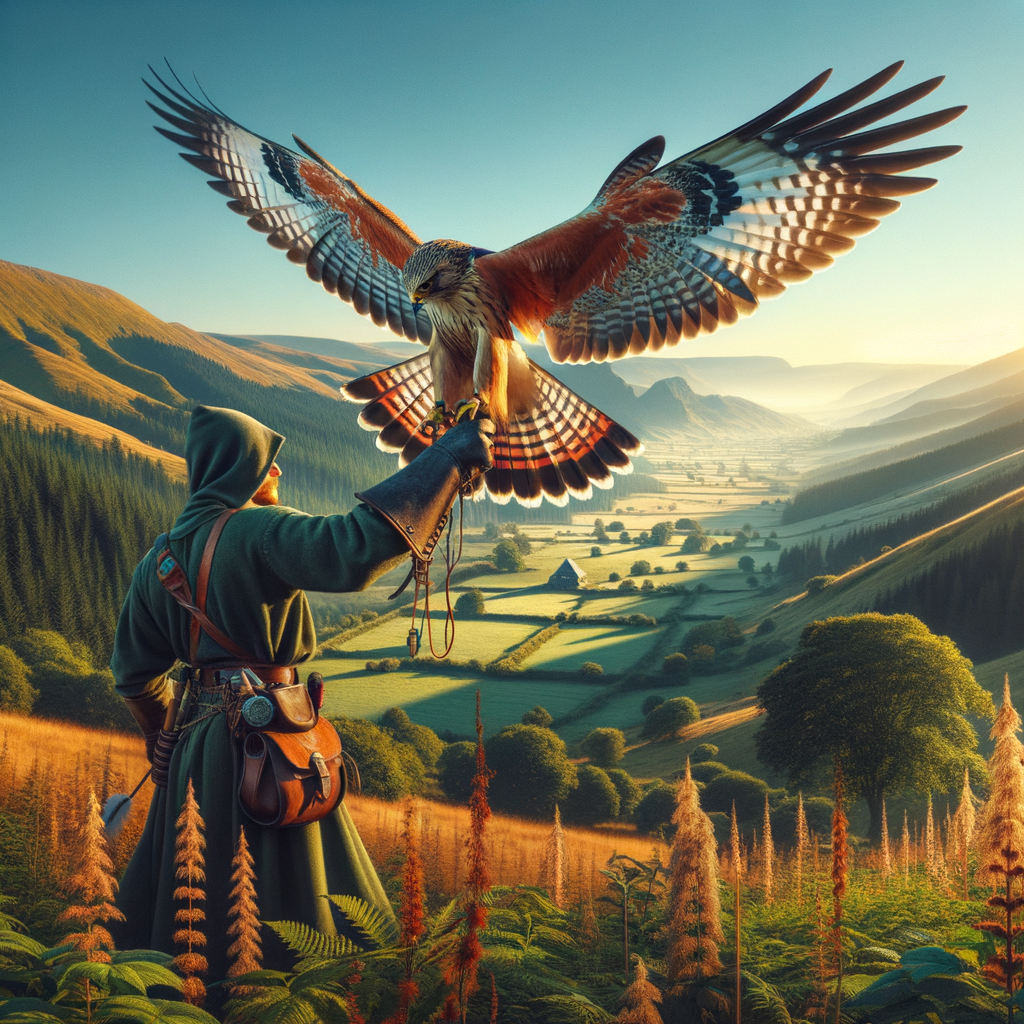Discover the Joy of Falconry with Learn Falconry
- Introduction to Falconry: Falconry is an ancient and fascinating sport where humans train birds of prey to hunt.
- History of Falconry: This practice dates back thousands of years, with roots in many cultures across the world.
- Types of Birds Used: Common birds in falconry include hawks, eagles, and falcons.
- Training Basics: Falcons and other raptors require time, patience, and dedication to train.
- Equipment Needed: Essential tools include gloves, perches, and tracking devices to ensure the safety and effectiveness of training sessions.
- Conservation Efforts: Falconry can support wildlife conservation by enhancing understanding and respect for birds of prey.
- Legal Requirements: Before starting falconry, it’s important to understand local regulations and obtain necessary permits.
- Educational Opportunities: Learn Falconry offers classes and resources for beginners to advanced falconers, helping enthusiasts start their journey.
- Community and Events: Join a community of like-minded individuals and participate in events and competitions to share your passion for falconry.
- Ethics of Falconry: Respect and care for the birds are paramount, ensuring their well-being while maintaining the tradition of falconry.
Dive into the world of falconry with Learn Falconry and become part of a tradition that blends nature, history, and skill.
Discovering the Exciting World of Hobby-Falcons
Welcome to the enchanting world of hobby-falcons! Imagine, if you will, an Irish farmer tending his fields while a clever border collie helps him herd the sheep. Just as this dog is not only a pet but a working partner and a source of pride and admiration, so too is a hobby-falcon for those passionate about the ancient art of falconry.
At Learn Falconry, we believe that falconry isn’t just a hobby; it’s a window into the awe-inspiring bond between humans and these magnificent birds of prey. In this article, we’ll dive into the captivating reasons why hobby-falcons are a phenomenal pursuit, offering you a thrilling combination of history, skill, and adventure. From understanding their unique traits to the joy of training and flying these regal creatures, sticking around will provide you with a rich and rewarding glimpse into a world that promises to soar your spirits.
So, buckle up and prepare to be enchanted, because just like that Irish farmer and his trusty collie, you’ll soon see why falconry is more than meets the eye! Let’s flap our wings and embark on this incredible journey together.
The Thrilling World of Hobby Falcons
Are you ready to dive into the exciting world of hobby falcons? For many, hobby falconry is more than just a hobby’it’s a passion that connects them with nature and history. Let’s explore what makes these remarkable birds so fascinating and delve into the specifics of handling and training hobby falcons.
Hobby falcons are a group of small to medium-sized falcons known for their agile flight and hunting skills. These birds are popular among falconers who practice hobby falconry due to their dynamic nature and vibrant plumage. Some common hobby species include the European Hobby, Oriental Hobby, and African Hobby, each offering unique characteristics that make them a joy to work with.
Types of Hobby Falcons
There are various species of hobby falcons, each with its own charm and challenges. You’ll find hobby falcons in different parts of the world, and they adapt well to various climates and environments. Visit our comprehensive guide on species of falcons to learn more about different hobby species.
Equipment for Hobby Falconry
Getting started with hobby falconry requires the right gear. From specialized gloves to hoods and perches, having the right tools makes all the difference. For a complete list of falconry equipment you might need, be sure to check our dedicated resources. Here, you’ll find essential items like types of hoods and bells and telemetry that ensure your hobby falcon’s safety and training efficacy.
Training and Techniques in Hobby Falconry
Training a hobby falcon is a rewarding experience that requires commitment and patience. Falconry training involves teaching your bird various techniques for hunting and flying. Start by learning the basic training techniques and gradually move on to more advanced training methods. These include teaching your falcon to respond to your call, fly in specific patterns, and even hunt with precision.
For more detailed advice on training, you can explore training with lures and clicker training falcons. Engaging in regular training sessions not only helps develop a strong bond between you and your falcon but also ensures the bird remains healthy and active.
Legal Aspects of Hobby Falconry
Before you begin your journey in hobby falconry, it’s crucial to understand the legal requirements. This practice is regulated to protect both the birds and the environment. Familiarize yourself with falconry licensing requirements and regional laws by visiting our section on the legal aspects of falconry.
Falconers need to secure appropriate permits and adhere to specific regulations, such as those under the Falconry Migratory Bird Act. Knowing these laws will ensure you can enjoy your hobby responsibly and legally.
The History and Culture of Falconry
Understanding the deep-rooted history and cultural significance of falconry adds to the richness of your experience. Falconry has a rich history that spans across different cultures and time periods. From its origins in ancient civilizations to its practice today, falconry has played a role in many societies around the world. You can explore more about the history of falconry in Medieval Europe and the Middle East.
Health and Nutrition for Hobby Falcons
Just like any athlete, hobby falcons need proper nutrition and healthcare. Providing a balanced diet is key to maintaining their health and performance. Check out our guide on falcon health and nutrition to learn about basic health care, dietary needs, and how to manage common health issues in your falcon. Proper weight management and regular health check-ups are crucial for your falcon’s wellbeing.
Joining the Falconry Community
Falconry is a community-driven hobby where many enthusiasts come together to share experiences and knowledge. Joining a falconry club can offer support, mentorship, and opportunities to participate in events and competitions. These clubs often host workshops, meets, and provide a platform for advocating for the sport.
Conservation Efforts in Falconry
Falconers often play a critical role in conservation efforts. By practicing ethical falconry, we ensure the survival and thriving of falcon populations in the wild. Learn more about how modern falconry supports conservation efforts and contributes to preserving habitats and restoring endangered species through responsible breeding programs.
Dive deeper into the fascinating world of hobby falcons with us at Learn Falconry. Whether you are just starting or looking to expand your knowledge, our comprehensive resources and community support will guide you every step of the way!
All About Hobby Falcons
Falconry is an exciting hobby that has been around for centuries, but have you ever wanted to know more about the incredible hobby falcon? Let’s dive deeper into the fascinating world of the Eurasian Hobby Falcon (scientific name: Falco subbuteo) and learn more about these amazing birds.
Fascinating Physical Characteristics
Eurasian Hobby Falcons are medium-sized birds of prey. Here are some interesting facts about their physical features:
| Characteristics | Data |
|---|---|
| Length | 29-36 cm (11-14 in) |
| Wingspan | 74-84 cm (29-33 in) |
| Weight | 175-285 g (6.2-10.1 oz) |
These falcons are known for their sleek and agile bodies, which make them excellent hunters.
Wild Habitats and Diet
Eurasian Hobbies are found in various habitats, including open woodlands, farmlands, wetlands, and grasslands.
Habitat Preferences:
- Open woodlands
- Heathland
- Farmland with stands of trees
- Near water bodies and marshes
Diet:
- Fast-flying birds like swallows and swifts
- Dragonflies
Migration and Distribution
Eurasian Hobby Falcons are known for their long-distance migrations. This species breeds mainly in the Palearctic realm and migrates to warmer regions during winter:
| Migration Pattern | Notes |
|---|---|
| Breeding Range | Palearctic realm |
| Wintering Areas | Africa and southern Asia |
| Migration Season | Leave breeding grounds: August-October; Return: March-April |
Interesting Breeding Habits
Eurasian Hobby Falcons have unique breeding behaviors. They often reuse abandoned nests of other birds such as raptors or corvids.
Breeding Facts:
- Breed in trees using old nests
- Seen singly, in pairs, or in family groups
Conservation and Challenges
Though the Eurasian Hobby Falcon is listed as Least Concern on the IUCN Red List, it still faces several threats due to human activities:
Conservation Status:
- IUCN Status: Least Concern
Threats:
- Habitat destruction
- Agricultural intensification
- Hunting during migration
These threats can impact the population and health of these amazing birds, making it important to understand and protect their habitats.
Falconry enthusiasts and bird watchers alike appreciate the beauty and skill of the Eurasian Hobby Falcon. Understanding more about their habitats, migration patterns, diet, and conservation can foster a greater appreciation for these incredible birds.
Explore the world of falconry and learn more about the fascinating hobby of falconry today!
Embracing the Art of Hobby Falconry
Hobby falconry is a fascinating pursuit that combines a love for nature with the thrill of working alongside one of the most skilled predators in the animal kingdom. The Eurasian Hobby falcon, with its striking features and impressive hunting skills, serves as a remarkable ambassador for this ancient art.
The Eurasian Hobby, known scientifically as Falco subbuteo, is renowned for its speed and agility, often hunting fast-flying birds like swallows and dragonflies. These falcons are typically found in diverse habitats such as open woodlands, farmlands, and wetlands across the Palearctic realm. With a wingspan ranging from 74 to 84 cm and a weight between 175 to 285 grams, they are perfectly adapted for swift, acrobatic flight.
This species is also notable for its migratory patterns, traveling long distances to winter in Africa, sometimes even reaching southern Asia. Breeding in these falcons takes place in abandoned nests of other birds, highlighting their resourcefulness. Their conservation status remains stable, yet it is vital to acknowledge threats like habitat destruction and agricultural changes that could impact their populations.
In summary, hobby falconry allows enthusiasts to engage deeply with these incredible creatures, offering a unique window into the natural world. By understanding and appreciating the Eurasian Hobby, we not only enhance our knowledge but also contribute to the conservation and appreciation of these magnificent birds. Whether you’re an experienced falconer or a curious beginner, the world of hobby falconry promises endless excitement and discovery.



